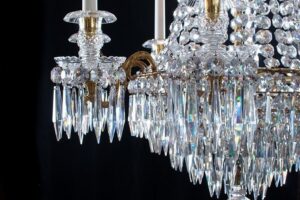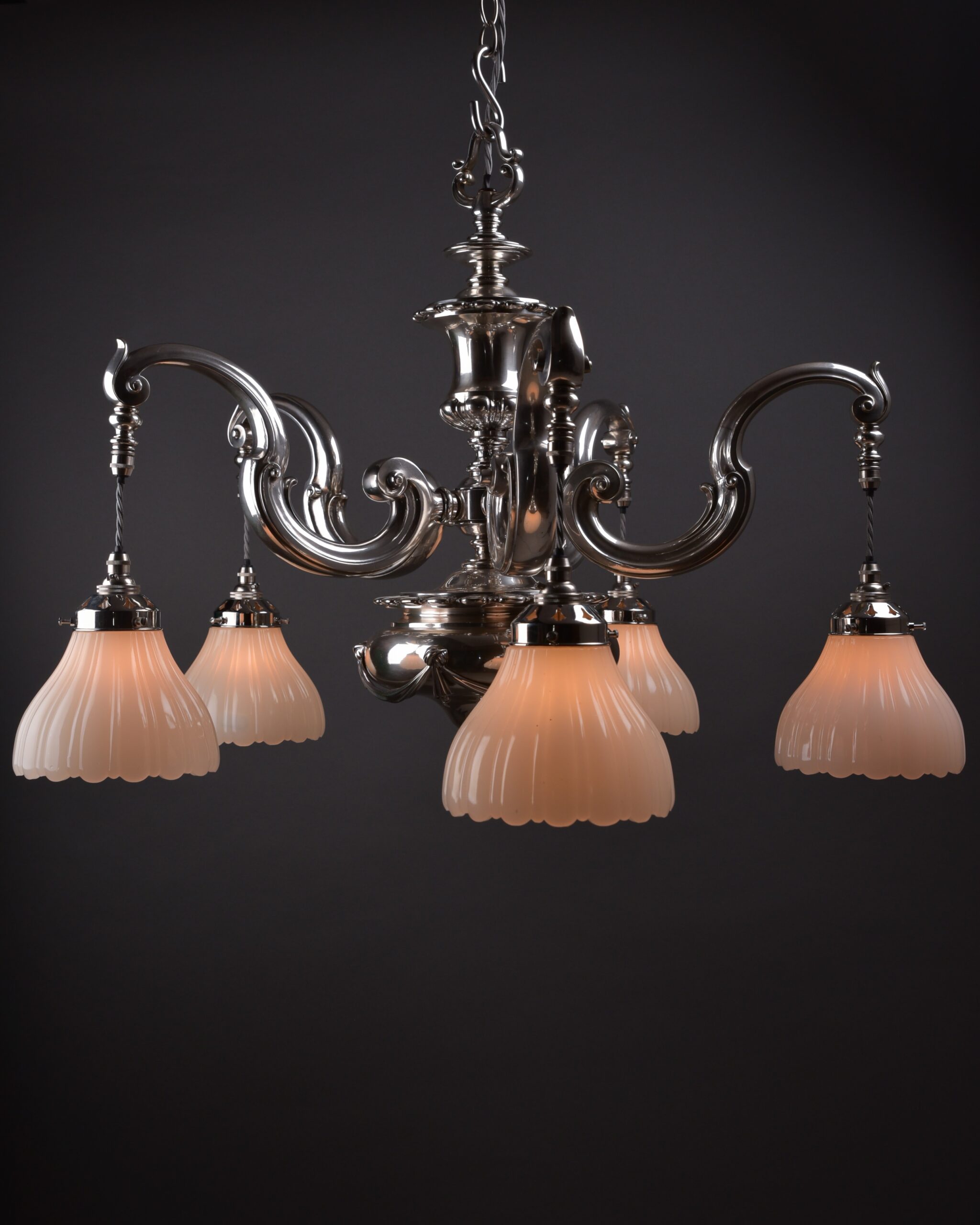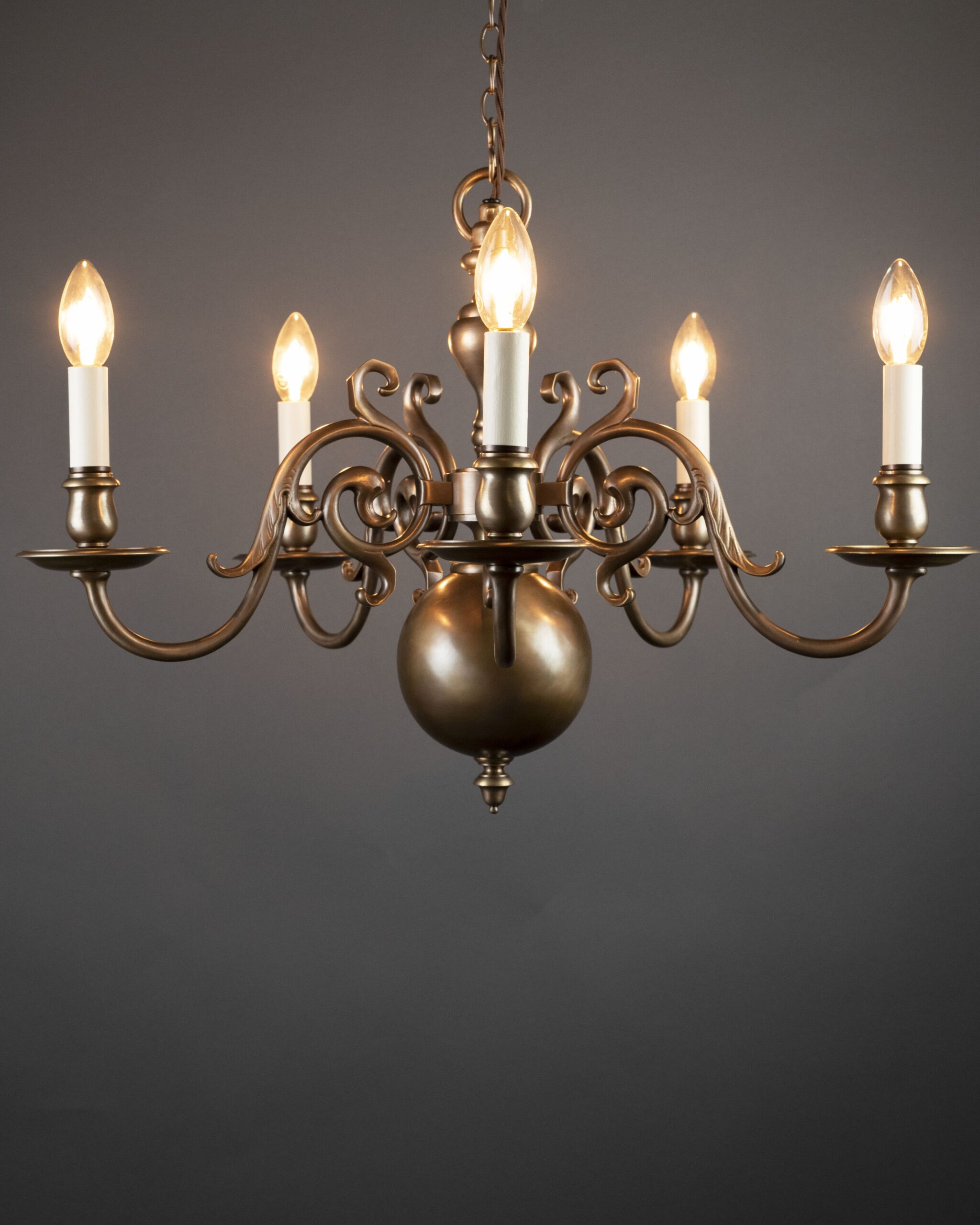If you’re in the market for antique lighting, especially chandeliers, here are our top tips to help you make the best purchase.
What Should You Know Before Buying?
Before purchasing, the most important thing is to choose antique chandeliers you genuinely love. While these pieces often hold their value, styles do evolve. For instance, elaborate Victorian chandeliers were once top sellers, but now, the trend favours simpler, contemporary designs
Where Do We Source Our Chandeliers?
Our collection of antique chandeliers is sourced from a variety of places, including auctions, antique fairs, and a network of trusted suppliers who understand what we are looking for and will buy chandeliers for us. This diverse approach allows us to offer a unique selection of antique lighting.

Which Periods Are Most Popular?
Today, simple and elegant chandeliers, particularly from the Georgian era, are in high demand. These timeless pieces, much like Georgian architecture, remain stylish and desirable, providing a sophisticated contrast in both minimalist and luxurious settings.
Which Era Made the Best Chandeliers?
Without a doubt, Georgian England stands out as the pinnacle of chandelier craftsmanship. The chandeliers from this period are truly exceptional, and a visit to the Bath Assembly Rooms will illustrate just how stunning and historically significant these pieces are. While French and Italian chandeliers also have a rich and impressive history, we have a particular affinity for British craftsmanship. The early glass techniques developed in England were renowned worldwide, and whenever possible, we take pride in sourcing and celebrating British-made chandeliers.
How Do You Match Chandeliers to Interiors?
A chandelier can suit almost any setting, though I’m not particularly fond of the trend of placing chandeliers in kitchens, as they can be quite difficult to clean! While they’re traditionally associated with grand interiors, chandeliers can also add a beautiful touch of sparkle to a simple, contemporary hallway. The best place to showcase a chandelier—especially if you don’t have 3-metre-high ceilings—is over a dining table hung low or in a stairwell.

How Easy Are They to Install? Do You Need Certification?
Installing crystal chandeliers can be a complex task due to the diversity of designs and the buildings they are installed in. The primary challenge is the weight; large crystal chandeliers can weigh around 20-25 kg, requiring a strong joist or other robust support to avoid any mishaps. In some cases, installation can be easier in modern buildings, particularly new builds, where the necessary support can be specified before the ceiling is plastered and finished.
We handle many installations because electricians are often cautious when dealing with high-value antique chandeliers. To ensure safety and compliance, we rewire and PAT test all our restored chandeliers, with all work carried out to meet current electrical standards.
What Should You Look for in Craftsmanship?
When evaluating the craftsmanship of an antique chandelier, focus on the quality of the materials and design. High-quality chandeliers feature deeply cut crystals and sharp, precise metalwork. If these elements are lacking, the chandelier may not be of the highest quality.
Given that antique chandeliers can range in price from £100 to £100,000, it’s essential to ensure your purchase meets your expectations. For pieces in the £400-£500 range, choose something you truly love, as aesthetic appeal is key. However, if you’re investing significantly more, we strongly recommend seeking expert advice. We’ve encountered chandeliers labelled as ‘Osler’ with high guide prices at auction, only to find they were of inferior quality and not genuine. To safeguard your investment, consult with a specialist chandelier dealer when considering high-value pieces.
Are They a Good Investment for a Property?
Antique chandeliers are generally a solid investment. Unlike contemporary fittings, they tend to hold their value over time. While they may not necessarily appreciate significantly in 10 years, they are likely to maintain a strong resale value, ensuring that they fetch a good price if you decide to sell
What’s the Top Tip?
Ultimately, the best advice is to buy what you love. Even if it doesn’t appreciate in value, you’ll have a piece that brings joy to your space.



